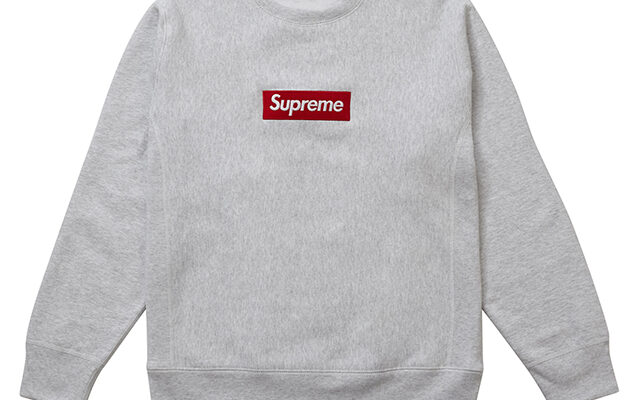In streetwear, few brands have made as profound an impact as Supreme. Founded in 1994 by James Jebbia in New York City, Supreme started as a small skate shop catering to local skaters. Today, it is a global cultural phenomenon, blending skate culture with high fashion, art, and music. Supreme success has not just been about selling clothes; it’s been about creating an aura of exclusivity, tapping into youth subcultures, and capitalizing on collaborations with some of our most influential brands and artists. But what exactly made Supreme’s rise to global prominence possible? This article explores the journey of Supreme’s international expansion and the factors that contributed to its worldwide sensation status.
The Early Days: New York’s Skate Culture
To understand Supreme’s global expansion, it’s important to recognize its roots. The brand was born in the heart of New York City, specifically in Manhattan’s downtown skateboarding scene. When James Jebbia opened the first Supreme store on Lafayette Street, it wasn’t just a retail shop; it was a community hub for skateboarders. Supreme’s initial appeal was straightforward: it offered high-quality skate gear with a rebellious edge that resonated with local youth. At the time, skateboarding was still largely subcultural, and there weren’t many brands that catered specifically to the needs of skaters while maintaining an urban aesthetic.
The shop’s design, too, was minimalist and iconic, featuring a stark red-and-white logo that would later become synonymous with streetwear culture. Unlike other skate shops, Supreme was a brand that positioned itself as an insider’s brand, accessible only to those who were “in the know.” The brand embraced countercultural values, drawing inspiration from punk, hip-hop, and the arts, while promoting a sense of exclusivity that would prove crucial in its later success.
The Rise of Streetwear Culture
The late 1990s and early 2000s saw the explosion of streetwear as a legitimate fashion movement, largely driven by a new generation of young people who were disillusioned with traditional luxury fashion. The rise of hip-hop and skateboarding as mainstream cultural forces helped solidify streetwear as a global phenomenon. Supreme with its deep ties to skate culture and its audacious attitude, was perfectly positioned to capitalize on this cultural shift.
In these early years, the brand was already collaborating with artists, musicians, and designers. One of the most pivotal moments in Supreme’s expansion came in 2000, when the brand partnered with the iconic artist and designer Jeff Koons. This collaboration, among others, introduced Supreme to a new audience—those who were interested not just in skateboarding but in art and contemporary design.
But it wasn’t just the collaborations that defined Supreme’s early growth; it was the scarcity model the brand pioneered. Supreme adopted a strategy of limited product drops, releasing small quantities of new items each season. By limiting supply and ensuring high demand, Supreme maintained its status as an exclusive brand that only the most dedicated followers could access. This exclusivity created a fierce loyalty among fans, making the brand’s releases feel like coveted treasures rather than mass-produced products.
Strategic Collaborations and Expanding Reach
As the brand’s reputation grew, so did its opportunities for high-profile collaborations. One of the most influential partnerships that helped Supreme expand globally was with Nike. The collaboration between the two brands, which began in 2002, allowed Supreme to merge the worlds of skateboarding and basketball—two powerful forces in global youth culture. The limited-edition Supreme x Nike sneakers became instant sell-out items, solidifying Supreme’s place in the fashion world.
Other significant collaborations included partnerships with high-fashion houses like Louis Vuitton, which solidified Supreme’s place in the luxury fashion industry. The Louis Vuitton collaboration in 2017, in particular, was a game-changer. This collaboration was a defining moment that blurred the lines between high fashion and streetwear and proved that streetwear wasn’t just a trend but a legitimate fashion category. The collaboration was celebrated for merging the worlds of luxury fashion and urban streetwear in an innovative and highly desirable way.
Supreme also worked with influential figures in the art world, including artists like Damien Hirst and Takashi Murakami. These partnerships helped to elevate Supreme from a niche skate brand to a mainstream cultural force. By linking the brand to avant-garde art and modern culture, Supreme’s appeal transcended its original audience and reached those who may not have even been familiar with skateboarding.
International Expansion
As Supreme’s reputation grew, so did its international appeal. Initially, the brand’s expansion was relatively slow, with the first store outside the U.S. opening in Tokyo in 1998. The Japanese market proved to be a key part of Supreme’s global strategy. Japan had an established streetwear culture, and the country’s obsession with American brands, particularly those with an air of exclusivity, made it the ideal location for Supreme to spread its influence beyond New York.
After Japan, Supreme continued to expand across Europe and the United States, opening flagship stores in major cities such as London, Paris, and Los Angeles. Each new location helped solidify Supreme’s global identity, while maintaining the sense of exclusivity that had originally made the brand successful.
Supreme also embraced the power of the internet, creating an online store that allowed its fans to buy products from anywhere in the world. This global reach was crucial to Supreme’s rise as a worldwide sensation, as it enabled the brand to tap into growing demand in markets outside the U.S. and Japan. However, Supreme continued to maintain its “limited” product strategy, ensuring that its online drops were just as coveted as those in its brick-and-mortar stores.
